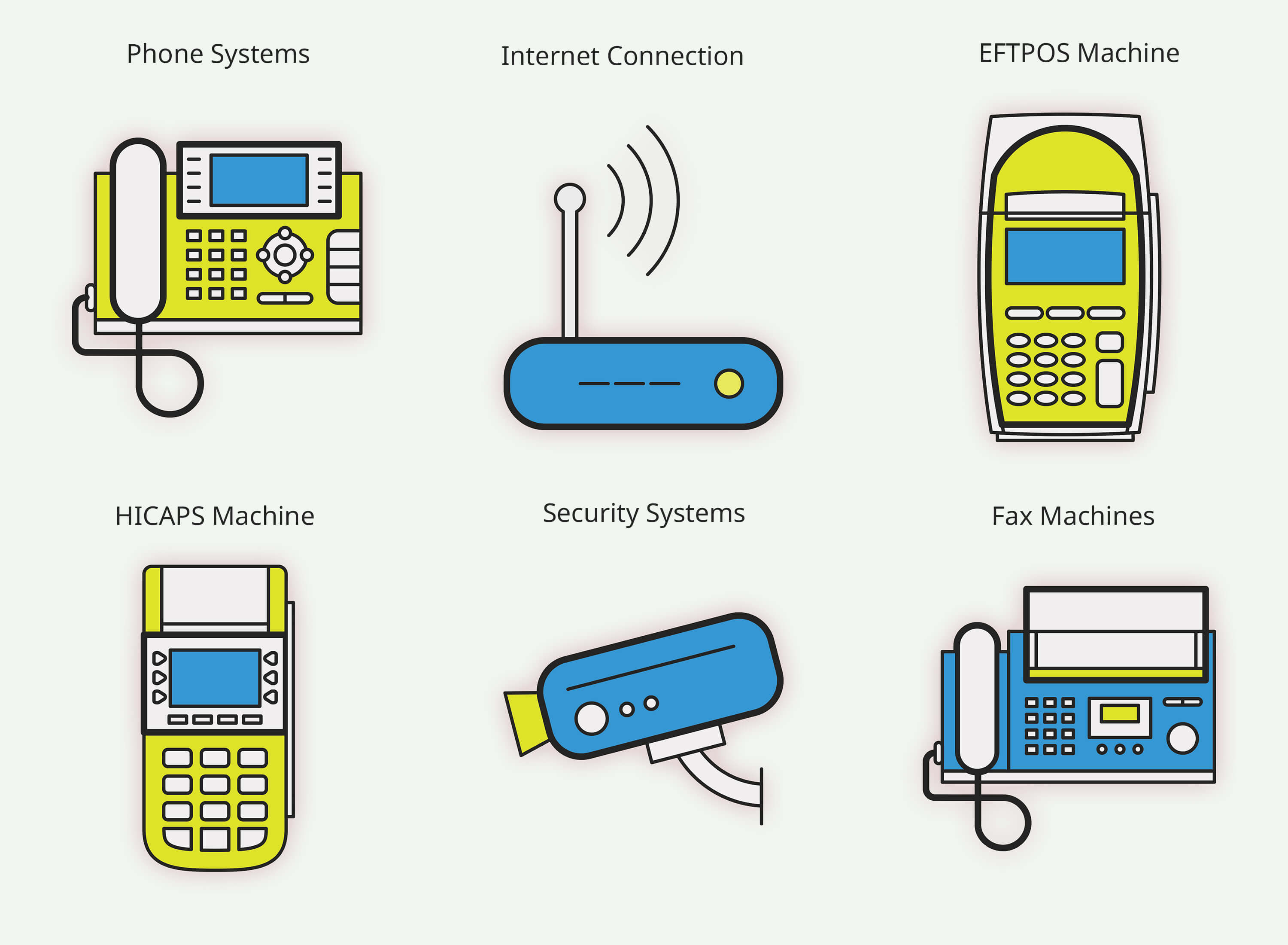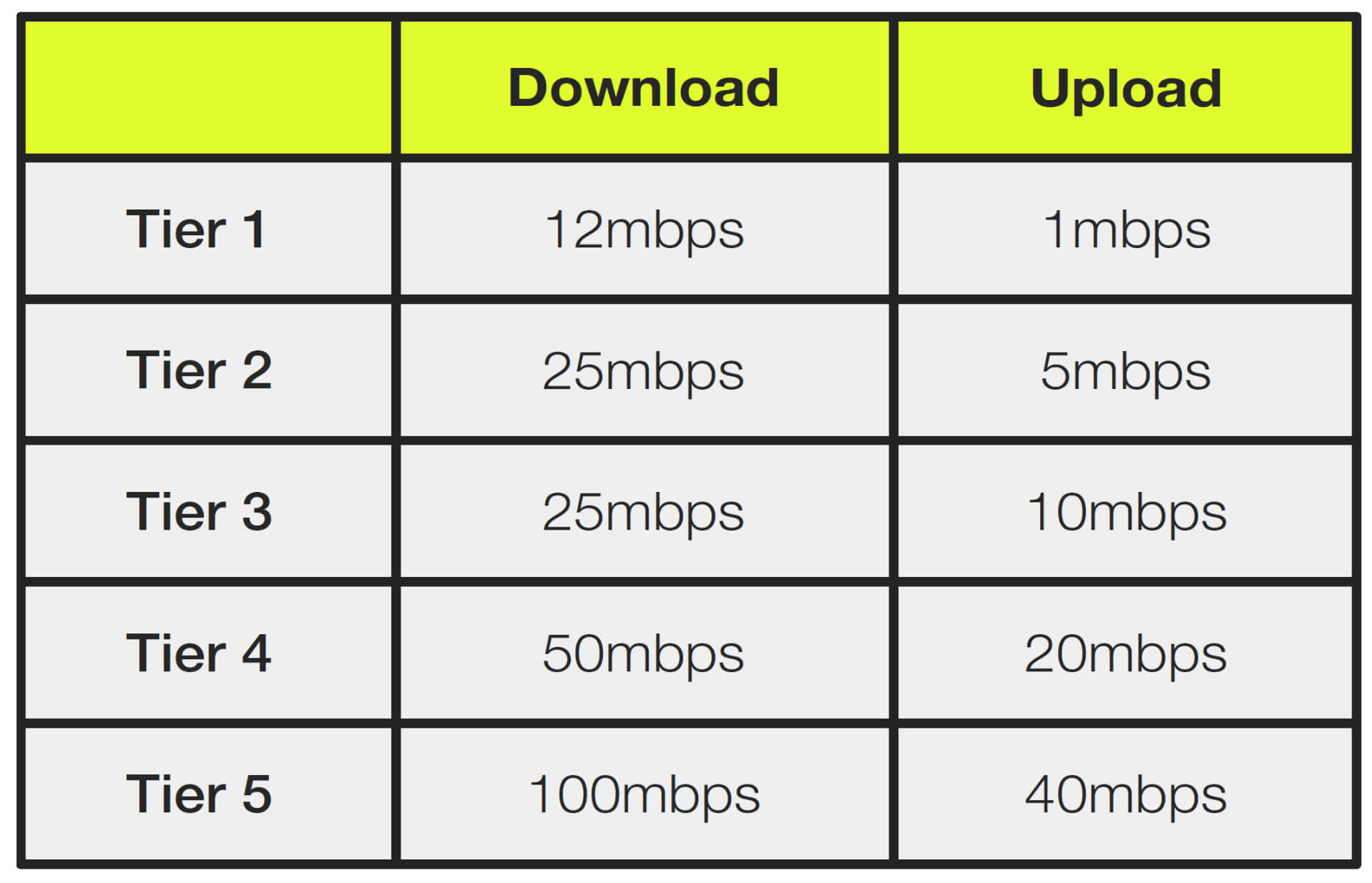It’s fair to say that by now every Australian business has heard of the NBN. But while it’s one thing to know that there’s a new fibre network rolling out across the country, it’s quite another to have the right information about how to prepare and transition your business to the NBN.

There has not been such a mandatory change to the way you operate on a daily basis since the introduction of the GST over 15 years ago. But unlike the GST introduction, an ill-prepared NBN transition can cost your business thousands of dollars in unworkable communications, wasted phone system upgrades and a loss of potential clients and sales.
The point of this article is to give you a better understanding of just what the NBN means for you. And more importantly, help you take the steps required to make sure your business isn’t one of those that gets left in the lurch when it’s time to make the switch, and the copper phone lines get cut off.
Get A FREE NBN Transition Plan
Want to ensure your small business is NBN Ready, apply for a free NBN transition plan to help you easily move your business without any headache.
The NBN will change everything, and affect every device your business relies on every day, from your internet data to the way your phone systems and EFTPOS machines work. So it pays to learn and understand as much as possible before it’s time to take action.
What You Need To Know About The NBN
The NBN is the new, government-owned fibre telecommunications infrastructure that’s eventually going to replace our old copper network entirely. Below we will go into detail about the different types of NBN that are being rolled out across Australia, but for now, the most important thing for you to know is that the NBN is not a choice.
You may be perfectly happy with how your data and phone services are currently working in your business, but unfortunately, that doesn’t matter – you will have to switch both your internet service and your phone services to the NBN.
That’s because the traditional copper infrastructure that we’ve been using for decades is going to obsolete in the near future. The NBN will either replace it entirely or utilise it in a different way (more about that below), and after the NBN has been installed in your local area, you’ll have a limited amount of time to migrate your existing services before they are switched off.
NBN Co isn’t messing around, so neither should you! Make sure you’re ready or your business could face a telco disaster.
Types Of NBN (and why it pays to know the difference)
You’ve probably noticed that the NBN has been the topic of much debate since the moment it was first discussed over ten years ago. Most of the debate has centred around the cost of the rollout and the types of NBN that Australians will access.
The NBN is a Multi Technology Mix (MTM), which means there are different technologies used to deliver broadband in different parts of Australia. We’re not here to get into the financial and political issues, but the type your business will get access to is important because it affects the way you connect to your data and phone services and, in some cases, the devices you use in the office.
Fibre to the Premises
Referred to as FTTP, this NBN technology has fibre cable running directly from the local NBN hub to an NBN device inside your office. All existing copper infrastructure will be removed in cases where FTTP is installed.
If you are getting FTTP NBN connection you will be getting an NBN Connection Box installed in your premises. The NBN Connection Box has 2 analogue ports, that you can connect analogue only hardware too.
This is a good setup for residential connections, but might not be appropriate for businesses with many analogue devices transitioning to the NBN. If you have more than two analogue devices you want to keep running over the NBN you will have to use an ATA that we will go into more detail about below.
Fibre to the Node
Rather than having the fibre run directly to your office, Fibre to the Node (FTTN) technology utilises the existing copper infrastructure that’s already in place in your area. Fibre cables run to the nearest node to your address, and then copper wiring carries the NBN to your office.
Fibre to the Basement
Similar to FTTN, Fibre to the Basement (FTTB) carries the NBN fibre cable to the communications box in the basement of your building. From there, the existing copper wiring in the building is used to deliver the NBN to your office.
Hybrid Coaxial Fibre
Hybrid Coaxial Fibre (HFC) uses the existing cabling that’s been installed previously by pay television services. This is more commonly an NBN delivery method for residential purposes, but is utilised for some businesses if the infrastructure already exists at your location.
Fixed Wireless
Fixed Wireless NBN services act in a similar way to your mobile phone internet services. The NBN is delivered to your premises from a tower in your area via an NBN receiver box. This box is located on the roof or a high part of your office building.
Satellite
NBN Satellite technology is usually reserved for rural and remote locations in Australia, where other technology would be costly or logistically impossible to install. There’s a big old satellite floating around out there that sends an NBN data signal to premises which have a receiving satellite installed on their roof or other high location.
A Checklist For Transitioning Your Business To The NBN
Through this article, we have given you an overview of what the NBN is and how it will affect your business. Below is a quick checklist that we advise you go through to ensure a smooth NBN transition for business:
1. Understand How The NBN Will Impact Your Phone Lines
Unless you are within the small percentage of Australian businesses that will be receiving NBN Fixed Wireless or Satellite services, your existing copper phone lines will either be removed or made redundant in their current form. That means that you will now rely on an NBN data service to make and receive calls, and this is known as VoIP.
Voice over Internet Protocol (VoIP) refers to any type of phone call made using the internet. Although it’s a new thing for us to make all of our phone calls using VoIP, many of us have already been doing it for some time by using apps like Skype, WhatsApp, and Facebook Messenger.
VoIP is a protocol that sends and receives digital data, which means it is not natively compatible with traditional analogue (copper) phone lines and devices. This is where a lot of confusion about the NBN comes about. Many people don’t get this information until it’s too late, or they are made to believe that they have to invest in entirely new office communications equipment before the NBN is installed.
Make sure you talk to a provider who you trust and get an NBN Ready Audit, because whether or not you can use your existing devices depends on the type of device you already have, the type of NBN you will be having installed in your office, and whether or not you can use an analogue telephone adapter (ATA).
ATA’s are simple devices that can be used to convert analogue signals into digital data, so there’s often a good chance you’ll be able to use one with your existing phones and other analogue devices.
VoIP and SIP – Which Is Right For Your Business?
While VoIP is the overall term used to describe phone calls made using the internet, Session Initiation Protocol (SIP) describes a type of VoIP that is more powerful and more suitable for business purposes. That’s because, while VoIP only carries voice data, SIP can be used for all kinds of multimedia, including video conferencing, instant messaging, and other cloud-based applications.
When it comes to deciding between VoIP and SIP for your business, the best thing to do is download our FREE Small Business Guide to the NBN and get all the details you need about both of these technologies.
2. Check Your Devices To Find Out If They Are IP-Enabled?
Every device that you use in your business on a daily basis that were previously connected via analogue (copper) phone lines will be affected by the switch to the NBN. These devices include:

- Phone Systems
- Internet Connection
- EFTPOS Machines
- HICAPS Machines
- Security Systems
- Fax Machines
& More
Each of these devices must be IP enabled to work over the NBN.
We advise you check all your devices to check if they are IP Enabled.
Your Phone System And The NBN
Every device that uses a NBN service has to be IP-enabled, and that includes your phone system. Your phone system will fall into one of the following categories:
It is a digital system and is IP-enabled – you’re good to go,
It is a hybrid system, which means it has IP-capability but has not yet been IP-enabled – talk to your chosen provider about enabling your system for the NBN
It is an analogue phone system that does not have IP-capability – this means the phone system itself will not work with the NBN.
However, it doesn’t mean you have to buy a new system! Talk to your provider about getting an Analogue Telephone Adapter (ATA). In most cases, this small investment will save you the thousands of dollars it would cost to buy a new phone system. However, you must talk to your provider about the type of NBN you will be having installed in your office, because ATA’s are not compatible with all of them!
Whether you have a cloud-based phone system or a traditional PBX system, the NBN will make your line rental and phone calls more affordable – that’s a given. However, converting to the NBN isn’t always as easy as plugging your phone system into your new service.
3. Preparing Your Office for the NBN
It’s important to find out which type of NBN technology you will receive at your office so that you can take measures to prepare.
You may need to rewire your office to get data connections to all the devices that will run via the NBN. Give us a call if you have any questions about the NBN and the wiring in your office.
Just don’t make the mistake of assuming you don’t have to do anything because it could cost you a lot of time and a lot of money.
4. How to Choose A Data Service for Your Business
NBN internet services are divided into tiers, each tier being defined by different download and upload speeds (bandwidth). This way, you have the flexibility to choose that best suits the needs of your business.
The five tiers are as follows:

Not all service providers can offer all speed tiers, so it is important you check before signing up. Before making the decision about which NBN data service you’ll have in your office, it’s important to think about how you currently use your internet, and how you’d like to use it in the future.
Should You Get A Dedicated NBN Connection For Your Voice Communications?
Because all of your phone calls, as well as your general internet use, will now use your NBN data service, you need to think carefully about which provider and which service you choose to manage this important task.
Depending on your internet connection, and phone system requirements, it may be advisable to get separate internet data connections for general internet usage and voice calls.
In some cases, this is absolutely necessary to maintain the integrity of your VoIP or SIP phone calls, however, if your provider gives you this advice straight up without asking you any questions first, then be wary. It’s important that you don’t pay for something you don’t need, and the key to doing that is choosing a provider that works with your business, for your business, not the other way around.
What Else Will Change With The NBN?
While your phone system is probably the biggest deal when it comes to your office communications, switching to the N will also affect other devices that you rely on every day.
Anything that uses a phone line will still need a phone line when the NBN is installed in your office, however, that means they’ll also be using your NBN data service. This includes your EFTPOS machine, HICAPS terminals, security systems, and fax machines.
It’s tricky for us to give individual advice because how you go about migrating these devices to the NBN depends on what type of device it is, whether or not it is IP enabled, and your provider.
In some cases, and ATA will help you switch your devices to the NBN but, as we mentioned earlier, ATA’s cannot be used with all types of NBN technology.
When Will The NBN Be Available In Your Area?
Use the interactive map below to search for your business address to find out if the NBN is currently available or when the NBN will be available at your business.
We advise making the transition to the NBN as early as possible and not waiting until the cutoff date. This is because although many NBN connections are activated within a few weeks, some new NBN connections can take months before they are installed and activated.
Conclusion: What Steps To Take Next/Where To Start
Before you contact ANY provider about getting the NBN in your office, make sure you have all the information you need. This will not only give you peace of mind, but it will also help you avoid salespeople who will be counting on your NBN ignorance to get a few extra dollars out of your business.
We developed the original Small Business Guide to the NBN to help Australian Businesses like yours prepare themselves for this big change, and to make sure your transition to the NBN is a smooth, hassle free, and affordable as it can be. Download it today and know that it’s the last thing you’ll have to read about the NBN, because it has all you need to know in one convenient place.
Alternatively, you can give our team a call on 1800 850 214. Whether you’re an existing client, trying to navigate your business through the NBN, or just in need of a second opinion about what you need to do to migrate your services, give us a call today and we’ll happily guide you in the right direction.







